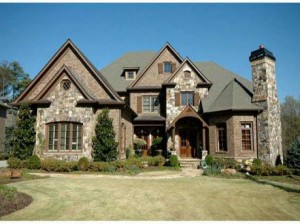A Look Back At 2012 Real Estate
2012 will probably be considered the year that the housing market finally hit bottom and began an upward trend back to normalcy. Home prices, home sales and new home construction all increased while at the same time inventory continued to shrink, and record-low mortgage rates continued. Let’s hope the trend continues!
These are some of the major factors affecting 2012 residential real estate, which many in the industry myself included, feel will carry over into 2013:
Stellar Mortgage Rates
Nationwide Mortgage interest rates continued a downward slide in 2012, reaching historic lows week after week. Record low rates helped the recovery along by attracting more buyers into the housing market and spurring millions to refinance. The question is when will rates start to increase?
Declining Home Inventory
The market continued to clear its oversupply of homes, which had swelled during the housing boom. The drop in inventory is a major reason home prices began to rise: Buyers bid up prices because they had fewer homes to choose from. October’s inventory of existing homes represented a 5.4-month supply, according to the National Association of Realtors. That was 21.9 percent lower than in October 2011 and a six-year low.
Year of the Short Sale
Short sales were the word in 2012, as lenders continued to embrace that approach to liquidation as less costly than foreclosure. A short sale allows a homeowner to sell his home for less than his mortgage (in other words to sell his home “short” of the actual payoff amount).
Short sales of homes in foreclosure are currently on pace to outnumber sales of bank-owned properties. Daren Blomquist, vice-president of online foreclosure marketplace RealtyTrac, said that short sales of properties not in foreclosure also accelerated, accounting for about 22 percent of total sales in the third quarter of 2012.
Threat of Shadow Inventory Recedes
Worries about “shadow inventory” — the supply of distressed properties held back and not released to the market — has loomed over the housing market ever since the financial crisis began. But in 2012, estimates of the size of that inventory continued to shrink, falling to 2.3 million in the second quarter of 2012 from a peak of nearly 3 million in 2010, according to analytics firm CoreLogic. Experts now think that the shadow inventory is probably not going to hinder a recovery, as banks continue to release these properties in a controlled manner over time.
Investors Continued to Snap Up Foreclosures
Investors had to endure bidding wars in 2012 to win homes selling at bargain-basement prices and convert them into rental properties. Investors purchased 20 percent of homes sold in October 2012, according to the National Association of Realtors. In Atlanta, getting twenty offers on an REO property has become the norm, and distressed property prices have been on the rise since 2009. It has become harder and hard to find (and win) really good deals, especially in the under $60K price range due to the competition at that price point.
“Low vacancy rates and rising rental rates, along with statements by Warren Buffet, helped attract both individual and institutional investors to the single family rental market,” ReatyTrac’s Blomquist said.
New Home Construction Comes Back
In most major markets, Atlanta included, new home construction all but disappeared after the market crisis of 2007, as excess inventory made building more homes pointless. But new home construction soared in 2012, and in October reached its highest level since July 2008, according to the U.S. Department of Commerce. In East Cobb alone, at least a dozen new home developments sprang up starting in early 2011, ranging in size from 10 to 20 home enclaves of higher end homes priced over $700K, to larger 50 and 60 home communities in $500’s.
Builder confidence is way up too, suggesting that builders will continue to break ground on more homes in 2013. Experts say that declining home inventory amid rising demand from buyers is spurring the spike in construction.
“Builders across the country are reporting some of the best sales conditions they’ve seen in more than five years, with more serious buyers coming forward and a shrinking number of vacant and foreclosed properties on the market,” said National Association of Home Builders Chairman Barry Rutenberg.
Most experts believe 2013 will see the real estate market continue to improve, and prices continue to increase, but caution that a full housing recovery will depend on the employment situation improving, which is likely to take several more years.
posted in Atlanta Housing Market | Comments Off on A Look Back At 2012 Real Estate

